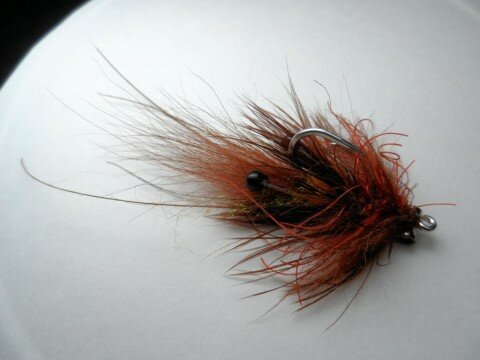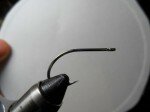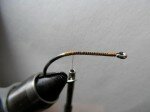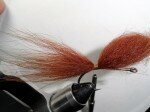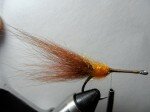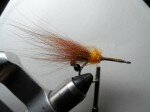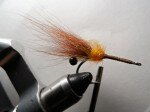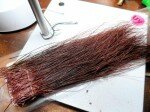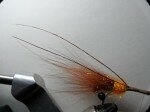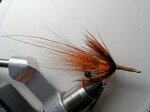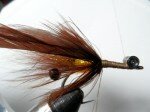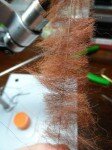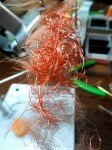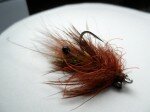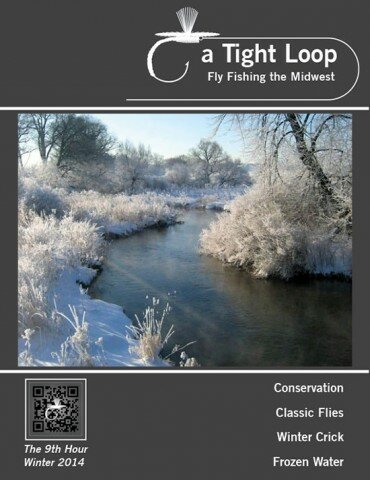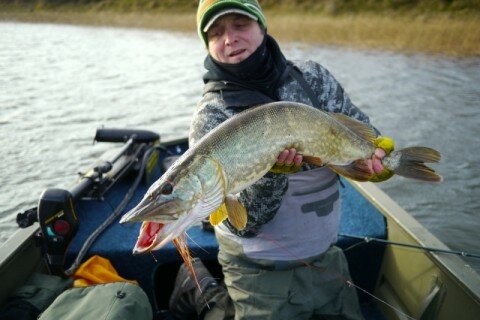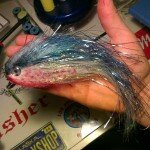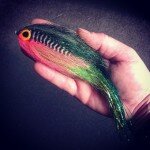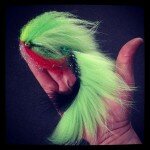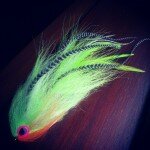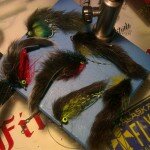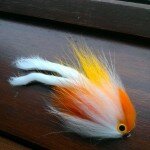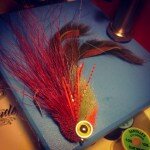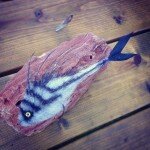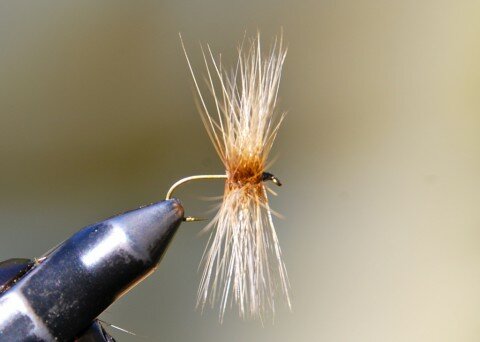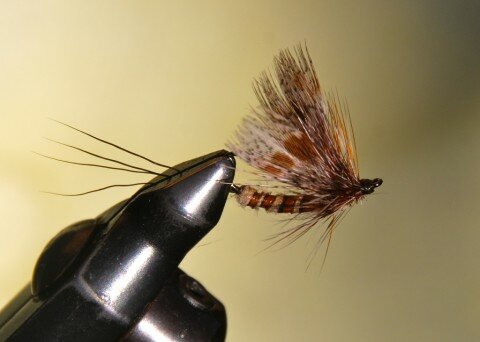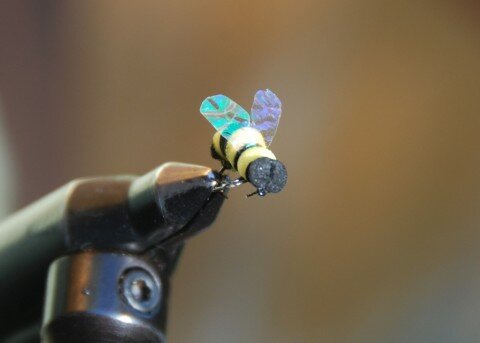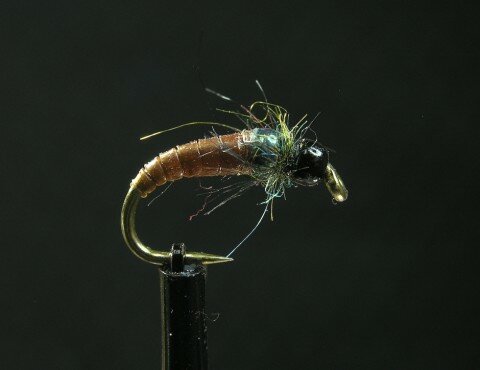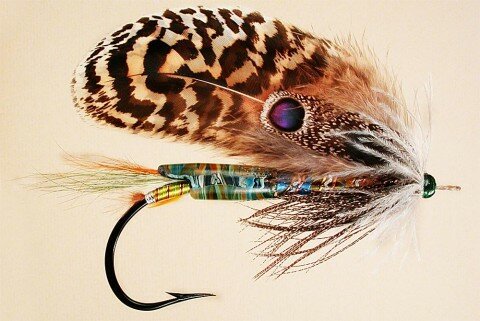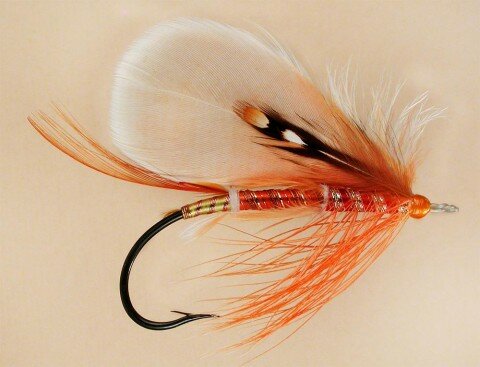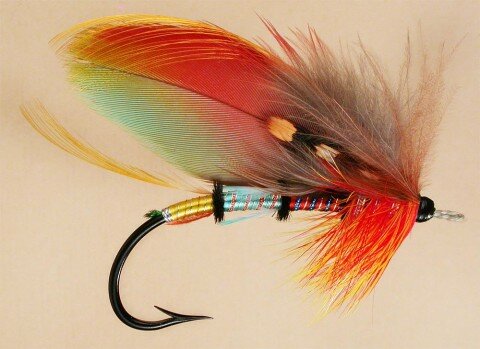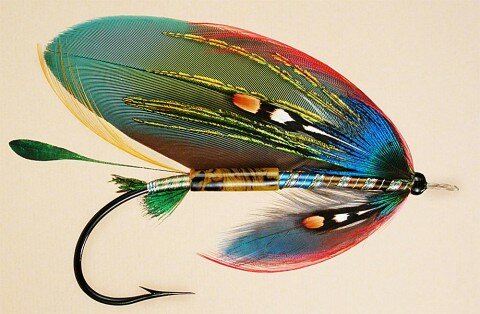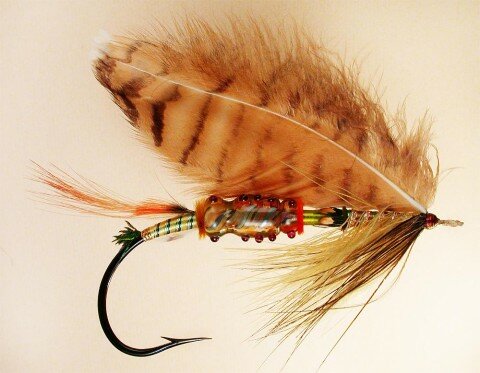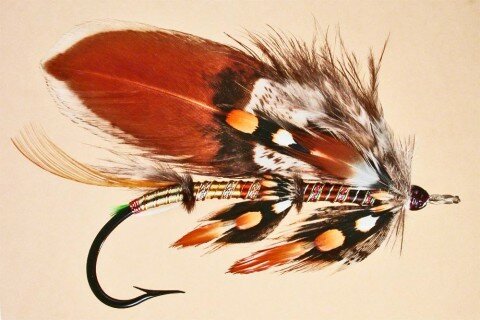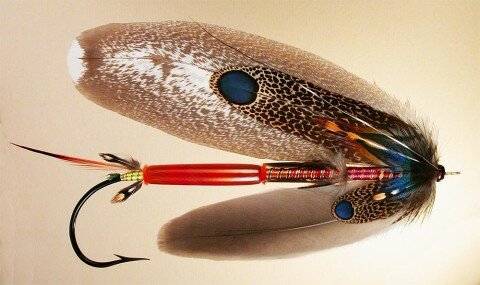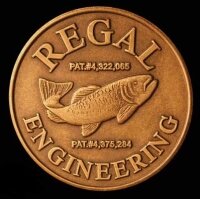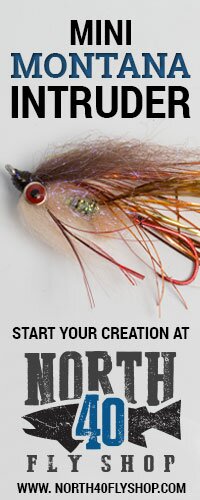Ben Treppa has come up with another crab/shrimp pattern and it’s a good one. I think this would make an excellent carp fly. Ben steps it out for you.
Hook: Gamakatsu SC15 1/0
Tail: Brown Arctic Fox
Eyes: Mono with 6mm black bead
Collar: Brown Schlappen
Body: Brown arctic fox and shaggy dub
Body Hackle: brown schlappen
Weight: Lead eyes
- Securely mount hook in vise and begin thread.
- I start at the eye, although its not necessary.
- Cut a clump of arctic fox or finn raccoon off the hide (this was a little too much. You’ll see in the next photo I removed some). Remove or comb out the under fur. Size the fox/finn how you prefer. Mine is about a hook and half long. Cut tag end and set aside for later in the tying process.
- Here is the fox/finn tied in tight and trimmed.
- Dub some Fl. Orange ice dub onto your thread. Create a “ball” in from of the fur. Comb it out a bit if you’d like or leave it as a ball. This is supposed to imitate a spawn sack, but also provides a great platform for the eyes and antennae.
- Prepare your eyes. I smash down the mono of the eye with pliers then tie them in along the whole shank. They hold up better this way. Add a touch of head cement of super glue to help them stay tied in.
- Prepare material for your antennae. For this fly I used burnt and dyed peacock herl. There are many different materials you can use as antennae including krystal flash, boars hair, pheasant tail, etc.
- Secure antennae. I usually do 3-5 antennae per fly.
- Prepare a brown schlappen feather by removing off webby stuff from the bottom. Tie in tip first and palmer to create a collar like shown in the picture.
- Prepare another brown schlappen feather by removing the webby base AND stripping one side of the feather. Create a dubbing loop about 4″ long for later in the process. Work the thread forward and tie a set of eyes (beadchain, lead, or omit) on top of the shank. Secure with superglue.
- Prepare dubbing loop by waxing the thread. Insert the ends of the arctic fox you have left over from prior steps and spread it evenly among the loop. If you discarded the tag ends you can substitute EP brushes or any other fiber similar. DONT SPIN YET
- Add some shaggy dub to your dubbing loop and now you can spin it. You can omit this if you’d like but I like the extra shaggyness!
- Palmer your schlappen forward and tie off/whip finish. You will notice that it probably looks horrible and compressed. Grab a bodkin and a toothbrush (or any dubbing tool) and brush this out very good. The shaggy dub and fox tend to get hung up in the loop.
- Black Prince – Don Bastian

